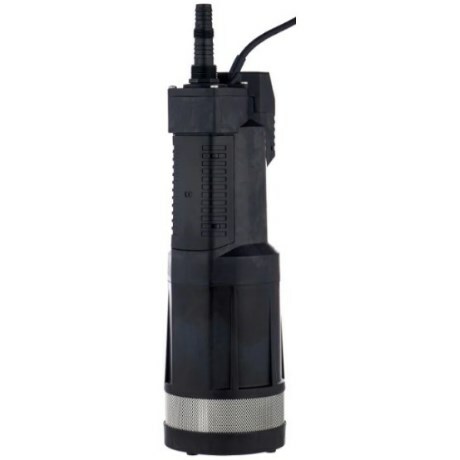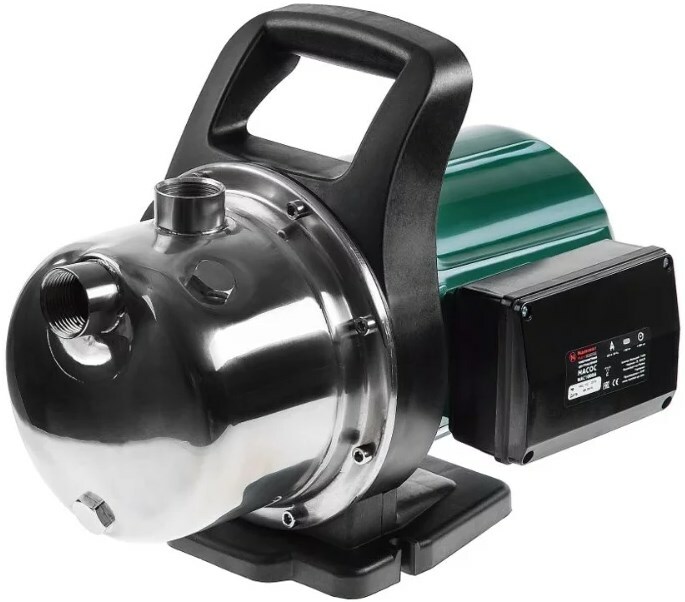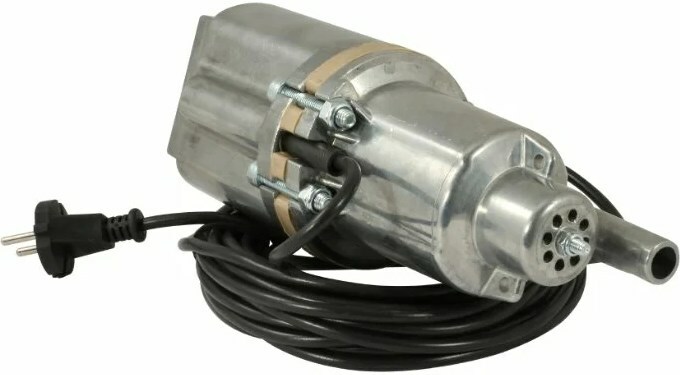To service a country house, a pump is required. With its help, you can quickly collect water into the irrigation container, into the pool, transport it to the bathhouse or to the kitchen. However, it is very important to approach the pump selection carefully, taking into account the technical and hydrogeological features. It's time to talk about the features of choosing a pump for a well and consider the 4 best well pumps of 2019.
CONTENT
- 1 Types of well pumps
- 2 How to choose the right well pump
- 3 Top 4 best pumps for a well
- 4 FAQ
Types of well pumps
The design specificity of the pumps depends on the expected working depth. All types of pumping units are divided into:
- Surface - used for lifting water from a depth of no more than 9m. Such units are well suited for occasional use in the summer season, they can be used to take water from small wells or open sources. They have a simple design, low efficiency and are sold at not too high prices.
- Submersible, deep the pumps are lowered directly into the water, connected to the supply hose and to the cable. The units lift water from depths up to 200m. Most often, submersible pumps are the main working element of year-round autonomous water-bearing systems. They are more complex constructively, more demanding on the purity of water and more expensive. The unit is equipped with a multistage engine.
Pumps differ in the way they form a vacuum for:
- Centrifugal - working due to the formation of centrifugal force by the blades of a centrifugal wheel. Most of the surface aggregates belong to this type. Such models have rather low requirements for the degree of water pollution.
- Vortex create a vacuum by rotating a vortex wheel, which is a disk with small blades located around the circumference. The blades form a vortex cavity inside the device. Vortex units give more head than centrifugal ones, but they are more demanding on water purity.
- Electromagnetic - work by drawing in water by a diaphragm, driven by the reciprocating operation of the electromagnetic field. These are submersible pumps that can handle contaminated water.
How to choose the right well pump
Let's take a look at the most important characteristics of the unit.
Performance
This is the number of liters sucked in by the unit per minute. The performance depends on the power of the pump and the throughput of the pipe through which the water is transported. The capacity should correspond to the amount of water consumed by all flow points in one hour. In order to determine the required water consumption, the number of intake points is calculated. When choosing a pump capacity, you also need to take into account the flow rate of the well.
Maximum head
The maximum head indicates at what height the upper water supply point is located from the suction point. It is imperative to compare the maximum pump head with the required water head. However, in addition to this, the maximum pressure also determines the pressure that will be at the outlet at a certain point of draw-off. For example, a conventional wash requires less pressure than a shower stall. Therefore, the max head must be taken with a margin of up to 15%. For example, if the pump is submerged 20m into the well, and the water needs to be raised to the second floor 6m up, you will have to take a pump with a max head greater than (20 + 6) + (20 +6) * 0.15 = 29.9 m. A device with a max head in 30m.
Suction depth
The maximum suction depth is the depth of immersion not in a well, but under water. For example, if there is a well 70m deep, but 20m from the surface to the water. So the water depth is 50m. Therefore, if there is a desire to lower the unit to the bottom, its max immersion depth should be at least 50m.
Calculation example
Let's consider, for example, the calculation of the required parameters for a well 25 meters deep. The dynamic level after pumping out is 15m, and the distance to the house is 30m. The taps are located on the first two floors of the cottage. Consumers - kitchen, shower, watering tap. The rest of the draw-off points are too small to be taken into account.
In order to calculate the pressure, we summarize the dynamic level of 15m with a horizontal section of the water supply of 30 m and 3m of vertical flow. Here we add a gravity index of 5m, which consists of 1m ascent to the first floor and 4m ascent to the second. Let's add 30m required for the normal operation of any pumping system. We have 15 + 3 + 5 + 30 = 53m or 5.3Atm - this is the minimum required to supply water to the cottage.
Let's calculate the water consumption. There are 3 water points available:
- the watering tap consumes up to 18 liters per minute;
- mixer - in the kitchen 10L;
- shower 12 liters for a minute.
To the received 40 liters, we add 5 liters for periodically working plumbing. The flow rate must be at least 15% less than the flow rate of the well. If, when pumping out water, the dynamic level decreases, the pump will switch to dry running mode and the wear of the equipment will accelerate.
Top 4 best pumps for a well
Best Centrifugal Submersible Pump for Wells
1. DAB DIVERTRON 1000 M (650W)

DAB DIVERTRON 1000 M (650W) for 19,000 rubles. equipped with electronic filling for auto-start. A relay and flow sensor protect the unit from running in the absence of water. The suction filter protects the functional pump wheels from clogging. Thanks to all of the above, high reliability is achieved. This well pump is the best choice for an individual country house water supply system. The unit is designed for wells with a diameter of 6 "and larger. Features of the device: electromechanical control system and protection against overload and dry running.
Price:₽ 19 063
DAB DIVERTRON 1000 M
Best Automated Submersible Well Pump
2. Grundfos SB 3-45 A (1050W)

Grundfos SB 3-45 A (1050 W) for 18,500 rubles a submersible device for water supply systems. The unit is used for better pumping water from wells or rain storage tanks, for increasing the pressure in the water supply network, for watering the garden, etc. Sucks in water slightly below the surface, where the water does not contain solid contaminants. A float switch can be used to operate in auto mode. A device with a float switch stops working when the minimum water level is reached. The pump has thermal overload protection, thanks to which the device immediately stops working if it overheats. The model is recommended when the distance from the well to the pump is less than 15m. Differs in high reliability and quiet operation.
Price:₽ 18 200
Grundfos SB 3 45 A
Best surface pump for wells
3. Hammer NAC 1000A (1000W)

Hammer NAC 1000A (1000W) for 7,200 rubles. - inexpensive surface type garden pump. Provides a maximum head of 44m. and a throughput of 3.5 cubic meters per hour. The immersion depth of the device is 8m. Works with lightly contaminated water. The practical, flawless pump filters out mineral inclusions larger than 3mm. Self-priming unit: the suction branch is located above the motor axis. The unit is ideal for an autonomous water supply device, pumping water to the consumer from a storage tank, in irrigation complexes. The model is distinguished by high-quality assembly.
Price:₽ 7 199
Hammer NAC 1000A
Best vibration pump for wells
4. UNIPUMP BAVLENETS-M BV 0.12-40-U5, 15m

UNIPUMP BAVLENETS-M BV 0.12-40-U5, 15m for 2200 rubles. meets high safety standards. The unit is used for the installation of water supply systems and pumping water from wells or wells with a diameter of more than 100 mm. The device works in a mode for 2 hours with a break of 15 minutes. Several pumps can be connected in parallel to increase the head. The pump body is made of a highly corrosion resistant aluminum alloy. Thanks to the copper winding of the coil, the pump heats up less during operation.
Price:₽ 2 109
UNIPUMP BAVLENETS-M BV 0.12-40-U5 15m
FAQ
Why does the pump in the well turn off?
There are several reasons for the irregular operation of the device: blockage in the device, a decrease in the water level in the well, depressurization of the pipeline, malfunctions in electronics (oxidation of terminal blocks, blockages in branch pipes, unstable voltage network).
Read also:
The best pumping stations



